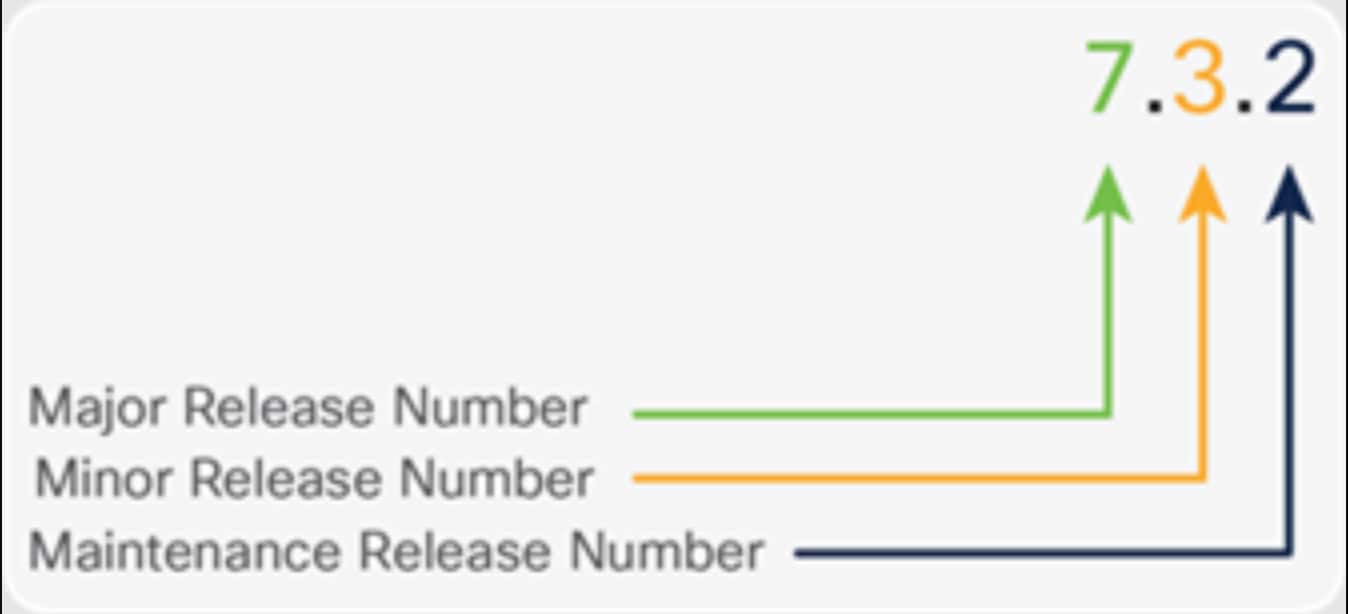This document explains the Cisco WAN Automation Engine (WAE) Software release methodology. It describes the different types of releases and their functions.
Types of Software Releases
The Cisco WAN Automation Engine (WAE) Software model has three types of software releases. Each release type has its own content scope and release frequency.
-
Major Release - Introduce significant changes throughout the software, including infrastructure or architectural changes
-
Minor Release - New functions, features, and enhancements; addresses critical customer requested enhancements and other new features, functions and enhancements, bug fixes.
-
Maintenance Release - addresses critical bug fixes.
Release Numbering

Each Cisco WAE Software release is uniquely numbered as X1.X2.X3 where X1 indicates a major release, X2 indicates a minor release and a change in X3 indicates a maintenance release.
Life Cycle of Cisco WAN Automation Engine (WAE) Software Releases
The entire life cycle of any release is 4 years, which includes the 18 months after the FCS date until the end-of-sale date of the release, plus 2.5 years starting from the end-of-sale date until the release end-of-life date. All maintenance releases of a particular release will share the same end-of-sale, end-of-maintenance, and end-of-life milestones.
Cisco provides software maintenance support on a release for 48 months after a release is introduced. Software maintenance support will provide customers with routine maintenance releases as well as point bug fixes.

Details of each phase is explained below:
-
First Customer Shipment (FCS): The time at which the Cisco WAE Software release is posted on Cisco.com.
-
Announce end of sale: End-of-sale announcements generally occur 18 months after FCS of a release. The announcement sets and shows all the significant milestone dates to the software life cycle and helps customers plan for the eventual phasing out of support.
-
End of Sale (EoS): End of sale occurs 24 months after FCS of a release. Sales of this particular software release and its subsequent maintenance release should cease.
-
Last date to ship: Last date to ship typically is 24 months after FCS of a release but may be longer. It is the last date that manufacturing is allowed to ship a system with this release of software.
-
End of Maintenance (EoM): End of maintenance occurs 36 months after FCS of a release. Bugs found are evaluated and fixed as soon as possible.
-
End-of-maintenance PSIRT: End-of-maintenance PSIRT occurs 36 months after FCS of a release. Bugs found become candidates for following feature releases. Problem resolution is through a different release.
-
End of life: End of life is 12 months after the End-of-Sale (EoS) date. Calls to Cisco TAC will not be addressed for this release. TAC recommendation will be to upgrade to a currently supported release to validate whether the bug still exists.
Cisco continues to provide TAC support for Cisco WAE releases until they reach the end-of-life milestone in accordance with the published Cisco end-of-life policy. Please refer to End-of-Life Policy document for more information.
Upgrade Paths
Maintenance releases are cumulative for each release they support. At the time it is published, the latest maintenance release includes all critical fixes published since the release was introduced. Cisco encourages all Cisco WAE Software customers to actively migrate to the latest maintenance release at their earliest convenience. If a bug is encountered that has been fixed in a maintenance release, the company’s support policy is to recommend an upgrade to the latest available maintenance release.
For the upgrade path of a release, customers may have unique requirements, and they are encouraged to work with local Cisco customer representatives to find the most optimal release for their network.
Customer Notifications
Cisco notifies customers of the life cycle and major milestones of a particular release by the following methods:
-
Release note: When a release is introduced, Cisco publishes a release note on Cisco.com for that particular feature release.
-
End-of-sale preannouncement: Six months before the end-of-sale date of the release, Cisco issues an official end-of-sale bulletin for the software release, which includes all end-of-sale milestones affected, including end of maintenance and end of life.
All of the documents are intended to provide advanced notification to Cisco WAE Software customers of the pending end-of-sale and end-of-life milestones.
Conclusion
Cisco WAE software release methodology preserves the integrity, stability, and quality of customers' mission-critical networks. It has the flexibility to respond to market needs for timely delivery of innovative features. Primary attributes of release methodology include the following:
-
Major releases introduce significant new features, functions, and platforms.
-
Minor releases enhance the features and functions of an existing major release.
-
Maintenance releases address product defects in a minor release.
Cisco continuously improves the release and support practices based on customer needs and input. For any questions related to release practices or suggestions for improvements, please contact your local Cisco sales team.
 Feedback
Feedback